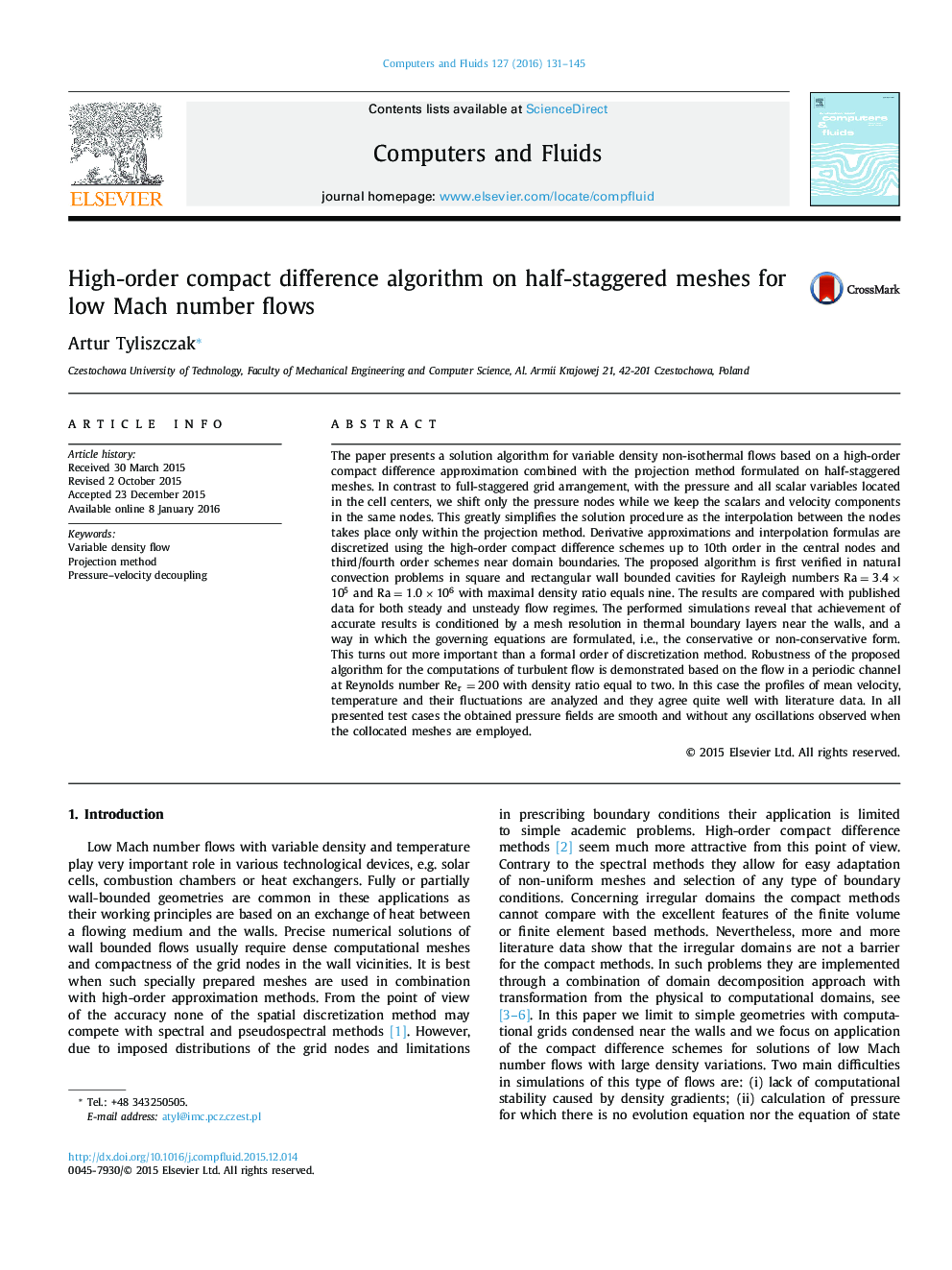| کد مقاله | کد نشریه | سال انتشار | مقاله انگلیسی | نسخه تمام متن |
|---|---|---|---|---|
| 761421 | 1462683 | 2016 | 15 صفحه PDF | دانلود رایگان |
• A solution algorithm for non-isothermal low Mach number flows with large density ratios is proposed.
• We apply compact difference approximation method combined with the projection method for pressure–velocity coupling.
• Use of half-staggered meshes eliminates pressure oscillations and facilitates efficient solution with almost the same effort as on collocated mesh.
• We model laminar and turbulent flows in partially open and fully enclosed wall bounded domain with good accuracy.
The paper presents a solution algorithm for variable density non-isothermal flows based on a high-order compact difference approximation combined with the projection method formulated on half-staggered meshes. In contrast to full-staggered grid arrangement, with the pressure and all scalar variables located in the cell centers, we shift only the pressure nodes while we keep the scalars and velocity components in the same nodes. This greatly simplifies the solution procedure as the interpolation between the nodes takes place only within the projection method. Derivative approximations and interpolation formulas are discretized using the high-order compact difference schemes up to 10th order in the central nodes and third/fourth order schemes near domain boundaries. The proposed algorithm is first verified in natural convection problems in square and rectangular wall bounded cavities for Rayleigh numbers Ra=3.4×105Ra=3.4×105 and Ra=1.0×106Ra=1.0×106 with maximal density ratio equals nine. The results are compared with published data for both steady and unsteady flow regimes. The performed simulations reveal that achievement of accurate results is conditioned by a mesh resolution in thermal boundary layers near the walls, and a way in which the governing equations are formulated, i.e., the conservative or non-conservative form. This turns out more important than a formal order of discretization method. Robustness of the proposed algorithm for the computations of turbulent flow is demonstrated based on the flow in a periodic channel at Reynolds number Reτ=200Reτ=200 with density ratio equal to two. In this case the profiles of mean velocity, temperature and their fluctuations are analyzed and they agree quite well with literature data. In all presented test cases the obtained pressure fields are smooth and without any oscillations observed when the collocated meshes are employed.
Journal: Computers & Fluids - Volume 127, 20 March 2016, Pages 131–145
